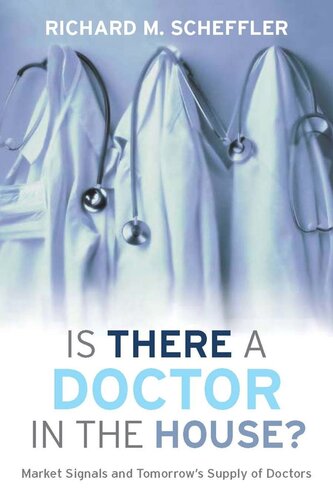

Most ebook files are in PDF format, so you can easily read them using various software such as Foxit Reader or directly on the Google Chrome browser.
Some ebook files are released by publishers in other formats such as .awz, .mobi, .epub, .fb2, etc. You may need to install specific software to read these formats on mobile/PC, such as Calibre.
Please read the tutorial at this link: https://ebookbell.com/faq
We offer FREE conversion to the popular formats you request; however, this may take some time. Therefore, right after payment, please email us, and we will try to provide the service as quickly as possible.
For some exceptional file formats or broken links (if any), please refrain from opening any disputes. Instead, email us first, and we will try to assist within a maximum of 6 hours.
EbookBell Team

5.0
58 reviews"Will there be a doctor—a good doctor—when I need one?" This is the bedrock health care concern for Americans, encompassing as it does additional concerns about affordability, accessibility, efficiency, and specialty expertise. Richard M. Scheffler brings an economist's insight to the question, showing how shifts in market power underlie the changes we have seen in the health workforce and how they will affect the future availability of doctors. Predicting the "right" ratio of doctors to population in the future is only a small piece of the puzzle, and one that has been the subject of much forecasting, and little agreement, over the past several decades. In this concise and readable analysis, Scheffler goes beyond the guessing game to demonstrate that today's health care system is the product of financial influences in both the policy realm and on the ground in the offices of medical centers, HMOs, insurers, and physicians throughout America. He shows how factors such as physician income, medical training costs, and new technologies affect the specialties and geographic distribution of doctors. Scheffler then brings these findings to bear on a set of predictions for the U.S. and international physician workforce that extend five and ten years into the future. As part of his vision of tomorrow's ideal workforce, he offers a template for enhancing the efficiency and cost-effectiveness of the health care system overall. In the groundbreaking second half of the book, the author, a health policy expert himself, tests his ideas in conversations with leading figures in health policy, medical education, health economics, and physician practice. Their unguarded give-and-take offers a window on the best thinking currently available anywhere. Finally, Scheffler combines their insights with his own to offer observations that will change the way health care's stakeholders should think about the future.